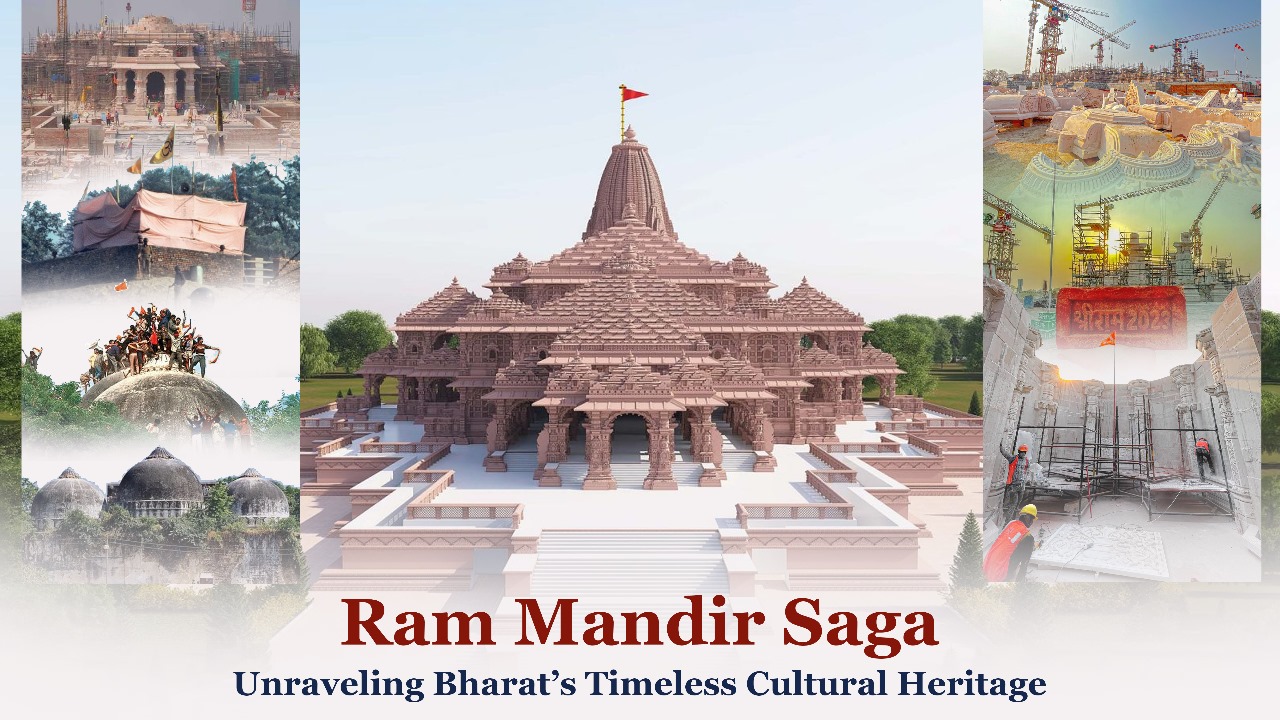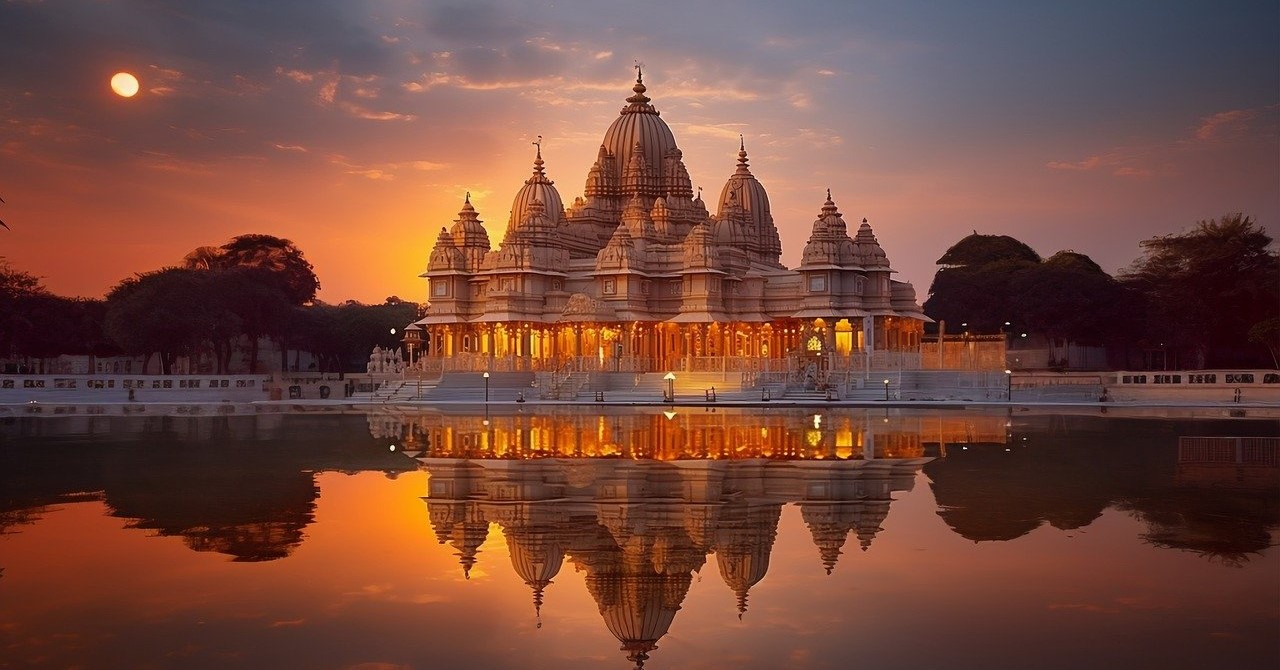
Ram Mandir Saga: Unraveling Bharat’s Timeless Cultural Heritage
In heart of Ayodhya, where history and spirituality intertwine, a monumental transformation has emerged — one that symbolizes unity, reconciliation and the shared cultural heritage of a diverse nation. The Pran Pratishtha ceremony of Maryada Purshottam Lord Shree Ram Mandir on the Janmabhoomi is set to be held on January 22, 2023.
Rohan Giri
Protracted and arduous journey in the run up to construct a grand temple for Lord Shree Ram is a testament to resilience and maturity of Bharatiya people that seek to build a future on understanding and mutual respect. This grand temple and consecration of Lord Ram scheduled for January 22 next year symbolizes national unity, reminding us that, despite our differences, we share common history and rich cultural roots.

Construction of Ram Mandir has paved the way for a new era of inclusivity in Bharat. The project concerned reconstructing a magnificent temple, healing wounds and fostering a sense of belonging among all communities. The site has been transformed into a symbol of shared heritage, inviting people from all walks of life to come together and celebrate Bharat\’s cultural mosaic.
Before delving into the ongoing construction of Ram mandir in Ayodhya, we must acquaint ourselves with a timeless story that transcends epochs, echoing the collective heartbeat of a nation.
The saga unfolds in Treta Yuga, as Ayodhya etches its indelible mark in the historical scrolls as the majestic capital of Ikshvaku dynasty. Under the reign of King Dasarath, the city witnessed birth of Bhagwan Shree Ram, the paragon of virtue. Ayodhya\’s historical roots delve into the ancient scriptures of Ramayana and Skanda Purana, narrating the story of the birth of revered Shree Ram. Hindu epic Ramayana tells the saga of Shree Ram\’s exile, the abduction of mata Sita, and his triumphant return to Ayodhya.
As time unfolded into Dvapara Yuga, Ram mandir persisted as symbol of reverence, preserving the legacy of Lord Ram and the ideals he embodied. Although this age was characterized by advent of Lord Krishna, the sanctity of Ayodhya and Ram mandir endured as a revered pilgrimage site.
In the contemporary era, identified as the Kali Yuga, the narrative of Ram Janmabhoomi faced formidable challenges with the advent of Islamic rulers, marking the onset of a chapter rife with destruction and radical change. The construction of the Babri Mosque atop the Ram Mandir by Mir Baqi during Babur\’s reign brought about a profound alteration in the city\’s landscape, giving rise to a complex juxtaposition of faiths that would unfold and resonate over centuries.
In the period of Mughal invaders, Bharat harboured a multitude of temples, nearly all of which were meticulously targeted, demolished, and subsequently replaced with new or Islamic religious structures. Many temples, their historical significance now erased, serve as silent witnesses to this tumultuous period. A current national debate centres on Ram Janmabhoomi and Krishna Janmabhoomi, as they are the most revered deities in Bharat.

In Hindu Dharma, temples hold profound significance, serving as centres of divine spiritual devotion, worship and as sources of culture, traditions, music, dance, education, architecture, food, yoga, meditation, and medicine. Presently, a significant majority of Bharatiyas are advocating for restoration of these heritage sites, which suffered demolition during invasions, emphasizing the necessity for redevelopment. Additionally, there is a growing call for the establishment of proper maintenance mechanisms for the most significant temples, especially those in remote areas.
Centuries later, after a 134-year-long cultural, historical, and civilizational legal battle, the essence of Ayodhya was reaffirmed in the Supreme Court\’s unanimous verdict in 2019. This landmark decision rested on concrete evidence rather than mere faith, marking a significant moment in the sacred land\’s enduring journey.
The decision paved the way for the construction of the Ram Mandir, a symbol of hope and unity for millions of devotees globally. Prime Minister Narendra Modi\’s auspicious pooja on August 5, 2020, marked the official commencement of the Mandir\’s construction—a moment etched in the annals of history.
Historical turbulence notwithstanding, Ayodhya\’s spirit endured, transcending borders and resonating globally. Devotion for Bhagwan Ram extends beyond Bharat, with Nepal, Sri Lanka, Thailand, Indonesia, and other nations expressing reverence for Ayodhya\’s cultural significance.
The Pran Pratishtha, consecration ceremony of the Ram Mandir stands as a poignant reminder of the shared values that unite the people of Bharat. The Mandir\’s grandeur symbolizes deep devotion to Lord Ram and represents a collective determination to transcend historical grievances and welcome a future marked by shared prosperity.
Ayodhya holds a sacred place alongside Mathura and Haridwar, encapsulating the cultural and spiritual essence of Sanatan Dharma.
(Rohan is a journalism graduate from Indian Institute of Mass Communication (IIMC) New Delhi, and Manager Operations at CIHS.)

